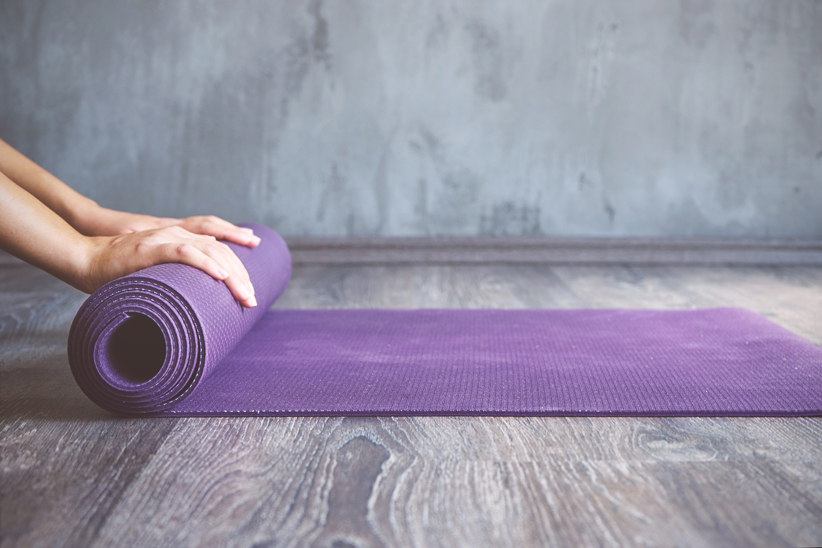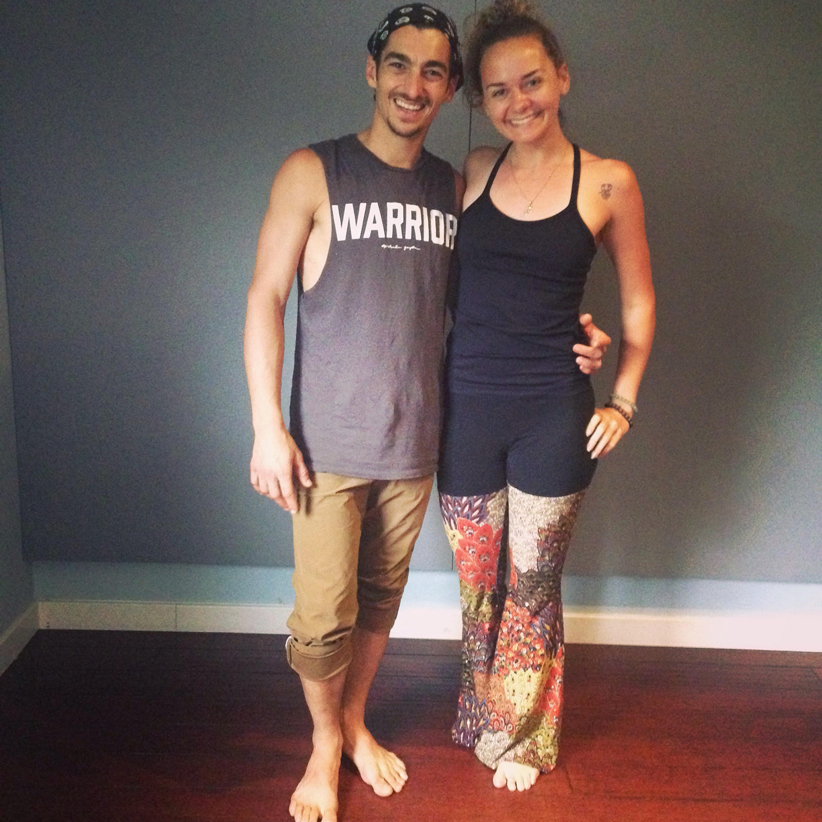Either we create good patterns or bad patterns in our bodies. And we can use the breath to find out how we want to feel, hopefully to start creating good patterns.
If you haven’t experienced the feeling personally, then you’ve seen it conveyed by the photographs of people in a pretzel shape, teeth clenched, brow furrowed, desperately trying to breathe while their body contorts: We think that we have to be a certain shape in order to feel really good, both on and off the mat.
“Our (yoga) practice seldom comes from the desire to feel good,” says Matt Giordano, internationally acclaimed yoga teacher based in Connecticut. Last month, Giordano traveled to Coolidge Corner Yoga (CCY) in Brookline, MA to teach a series of workshops (“Shoulders: Boundless Form” and “Hips: Rock ‘Em and Unlock ‘Em”) centered on playfulness, space, and freedom: three things that Giordano would argue are part of a truly “feel good” practice. I had the good fortune of attending both sessions!
As 40 or so yogis found ourselves mat-to-mat for each workshop, Giordano instructed the group to notice their breath as we prepared to learn separately about “boundless form” in the shoulders and how to “rock and unlock” the hips. After centering, Matt commenced both workshops by assuring his participants that yoga is about patterns we create. “Either we create good patterns or bad patterns in our bodies. And we can use the breath to find out how we want to feel, hopefully to start creating good patterns.” Matt’s playful nature and intelligent, skillful cuing led him to inform participants both safely and inspiringly through both workshops, starting with “Shoulders: Boundless Form”.
After a series of vinyasa flows and warrior asanas (poses) to warm up, strengthen and stretch the body, participants learned about the mechanics of the shoulders. “Because the clavicle is the only bone that connects the shoulder girdle to the trunk of the body, we truly have ‘boundless form’ through our shoulder girdle,” said Giordano, demonstrating exaggerated circles with his arm. He used poses to prompt exploration in countless ways. Baddha (bound) Parsvakonasana (side angle) and Urdhva (raised) Hastasana (hands pose) reminded us to ‘depress’ and ‘elevate’ shoulder heads, to ‘retract’ and ‘protract’ shoulder blades. Asana serving as our gateway into deeper inquiry.
Giordano taught how to avoid compression (bone on bone impingement) in the shoulder girdle by examining the common yoga teacher’s cue to “relax your shoulders away from your ears.” He explained that adhering to this cue could actually be doing more harm than good when trying to reach the arms overhead in postures such as Warrior I and Urdhva Hastasana, as it creates potentially harmful impingement in the subacromal space (the space between the acromion and the humeral head). Instead, he says, with your hands by your side, externally rotate your upper arms, raise your arms upwards on the in-breath, and then reach up from the outer line of the arm without so much of a focus on the shoulders.
Circling back to patterns, Giordano stressed the fact that not only can we notice patterns in our bodies, but we can notice patterns in our minds – patterns that we can easily caught up in and cause stress. “Ask yourself:” he says, “If I’m deciding to do this, or if I’m reacting to do this.”
As he started cuing sun salutations to warm up for the second workshop, “Hips: Rock ‘Em and Unlock ‘Em”, Matt reminded participants to “search for the desire to feel good inside.” “The hips are an area where we tend to hold patterns,” added Giordano. For example, if you are standing upright and talking to somebody, you may notice that you are sinking into one hip – a pattern we all know too well. Through a series of partner exercises, participants explored internal and external rotation of the hips based on the strength of the standing leg in asana. “Juicy” hip openers such as Kapotasana (pigeon) and Gomukhasana (cows face pose) were deconstructed by Giordano so that participants experienced a maximum stretch and release.
After all of the strengthening and stretching… participants shavasana-ed.

Owners Tatyana and David Souza of Coolidge Corner Yoga furthered Giordano’s message saying, “if you feel good, you want to do good deeds.” Based on this very philosophy, the studio offers a plethora of amenities and features that embody community, sustainability, and giving back. The studio’s prime location right on Beacon Street calls everyone from young to old, novice to seasoned to the practice of yoga. When you walk up the staircase to the cubbies and welcome desk, you are greeted by friendly receptionists who invite you to make some hot tea and read a complimentary magazine in the spacious lounge while you wait for class. Community artwork fills the wall space of each of the three large yoga rooms, while all studio furnishings and retail offerings are sourced locally and sustainably… for example, the reception desk, shoe racks, and coat racks are made from reclaimed factory wood flooring, and the furniture in the studio is also fabricated from reclaimed wood and antique pieces from India.
CCY donates a substantial amount of their profits back to local and global causes each year, based upon an annual community vote as to which charity/ charities need the most support. Classes offered include many different styles such as Restorative, Yin, Forrest, and Gentle, and cater to a multitude of groups of people, such as kids, pre/post-natal women, and those trying to heal from trauma. For those on a budget, CCY offers affordable yoga options, such as Vinyasa and Mindfulness Moment, at the $5 and $10 drop-in price. If you are in the South End, check out CCY’s sister studio, Sadhana Yoga which offers weekday $10 drop-ins for both morning and lunch classes.
Matt Giordano offers some great tutorials on his YouTube channel (@TheYogiMatt), including handstand tips, core workouts, and arm balance guides, guided by the principal of feeling good! More information on advoiding injury in the shoulders can be found in this article on his website. Also visit Matt’s website, www.theyogimatt.com, for his full teaching schedule.
Ashley Matthews is a seasoned yoga instructor passionate about teaching people how to have a mindful experience on the yoga mat so that they may translate principles learned in class into their daily life for a greater sense of ease and purpose. Through her six years of experience teaching yoga and meditation classes in the workplace and one-on-one on the North Shore, she has guided people of all ages and capabilities to make yoga work for them.

